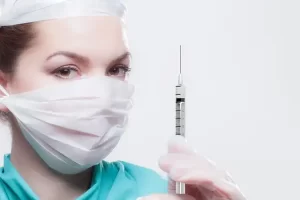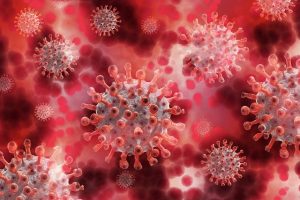How to do next if having moyamoya disease?
- Mifepristone: A Safe and Effective Abortion Option Amidst Controversy
- Asbestos Detected in Buildings Damaged in Ukraine: Analyzed by Japanese Company
- New Ocrevus Subcutaneous Injection Therapy Shows Promising Results in Multiple Sclerosis Treatmen
- Dutch Man Infected with COVID-19 for 613 Days Dies: Accumulating Over 50 Virus Mutations
- Engineered Soybeans with Pig Protein: A Promising Alternative or Pandora’s Dish?
- Severe Fever with Thrombocytopenia Syndrome (SFTS): A Tick-Borne Threat with High Mortality
How to do next if having moyamoya disease?
How to do next if having moyamoya disease? What is moyamoya disease? It is a brain disease, it is also called abnormal vascular network disease.

1. What is moyamoya disease?
Moyamoya disease, also known as abnormal vascular network disease at the base of the brain, is a rare progressive cerebrovascular disease caused by occlusion of the arteries at the base of the brain. Due to stenosis or occlusion of the initial segment of the internal carotid artery, abnormal blood vessels appear at the base of the skull. The net looks like smoke during angiography, so it is called moyamoya disease. Patients may have symptoms such as cerebral infarction, cerebral hemorrhage, hemiplegia, etc., which are extremely harmful, and severe cases can affect their lives. At present, intracranial and extracranial vascular reconstruction is the main treatment method.
2. Why do patient get this disease?
The cause of moyamoya disease is still unclear, and genetic factors have been found to play an important role in the occurrence and development of moyamoya disease. Patients with certain specific genes may be more susceptible to this disease. Known factors related to disease include: genes, hereditary factors, blood diseases, metabolic diseases, immune diseases and other own diseases, environmental factors, etc.
3. What are the symptoms?
The clinical manifestations of moyamoya disease mainly include the following categories:
1) Transient ischemic attack (TIA) type: the most common type, manifested as recurrent transient weakness or paralysis, and complete recovery of motor function after the attack. Some patients may experience headaches and paresthesias.
2) Infarct type: The patient has cerebral infarction, which is manifested as limb sensory or movement disorder, and visual disorder.
3) Epilepsy type: frequent seizures, partial seizures or status epilepticus, accompanied by EEG epileptiform discharge.
4) Hemorrhagic type: subarachnoid hemorrhage or cerebral parenchymal hemorrhage.
4. What are the types of this disease?
Moyamoya disease is mainly divided into three categories according to the severity of the disease:
The first type is asymptomatic moyamoya disease, which is accidentally discovered during the examination, and subsequent active treatment can avoid cerebrovascular accidents.
The second category is the moderate risk type, with transient ischemic attack symptoms, such as headache, dizziness, and transient blindness.
The third type is the severe risk type, which has induced other types of serious brain diseases, such as cerebral infarction and cerebral hemorrhage.
5. What inspections are needed for this disease?
Transcranial Doppler ultrasound is a preliminary screening examination of various intracranial vascular abnormalities, which can help determine the severity of moyamoya disease. Cerebral angiography can detect stenosis, occlusion, and dilation of cerebral blood vessels, which is the main method to diagnose the disease. EEG generally has no specific changes. Whether it is hemorrhage patients or infarct patients, the performance of EEG is roughly the same. MRI and MRA can also show abnormal cerebrovascular networks.
6. How to treat this disease?
The main treatment for moyamoya disease is intracranial and extracranial vascular reconstruction, which can effectively prevent ischemic stroke and reduce the risk of bleeding. At present, there is no effective drug therapy. For patients in the chronic phase, drug therapy can be given to the risk factors of stroke, such as antiplatelet drugs and anticoagulants, but attention should be paid to drug-related side effects.
7. What are the methods of surgery?
Intracranial and extracranial vascular reconstruction surgery is the main treatment for moyamoya disease. Vascular reconstruction surgery methods mainly include three types: direct vascular reconstruction surgery, indirect vascular reconstruction surgery and combined surgery. Among them, the superficial temporal artery-middle cerebral artery branch anastomosis in direct revascularization is the most commonly used. Moyamoya disease is a progressive disease. Once diagnosed, surgery should be done as soon as possible.
8. What is the prognosis?
The therapeutic effect of moyamoya disease is related to the patient’s age and the severity of symptoms before treatment. For children, cerebral infarctions often occur frequently, and the prognosis is usually poor. Adults have a better prognosis after treatment. Because the cause of the disease is not yet clear and cannot be effectively treated for the cause, the patient cannot be completely cured, but surgical treatment can control the patient’s progress.
9. What should patients pay attention to in daily life?
Patients with moyamoya disease should pay attention to maintaining a stable mood in their daily lives, avoid agitation, and prevent cerebral hemorrhage caused by elevated blood pressure. In addition, try to avoid actions that cause increased intracranial pressure, such as vigorously sucking noodles. It is recommended to reduce the intake of high-fat foods to protect blood vessels. Patients should be reviewed regularly after surgery, and seek medical attention if they feel unwell.
(source:internet, reference only)
Disclaimer of medicaltrend.org



